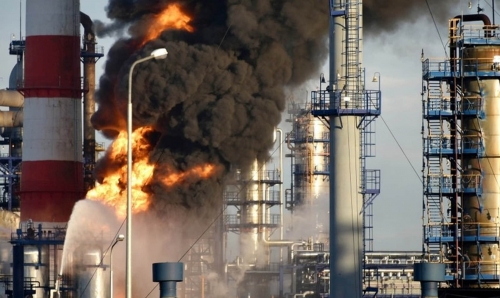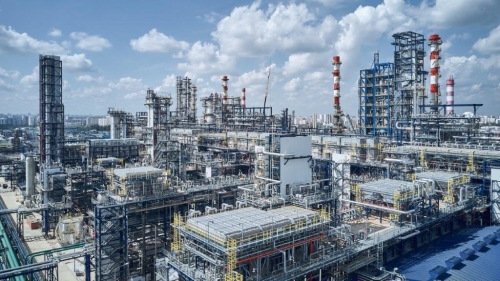Private capital investment into US oil and gas, and particularly the shale industry, is on the rise as development becomes economically attractive once again, writes Kevin Godier
What: Private money is flowing into the US oil and gas industry, notably into shale.
Why: Reduced costs and improved oil prices are among the drivers.
What next: The nimblest producers will continue to attract investment.
Private money is flooding into the US oil and gas industry, particularly into shale development, as the industry recovers and the price of oil remains above US$50 per barrel. Private equity funds raised US$19.8 billion for the US energy sector during the first quarter of 2017, according to figures from financial data provider Preqin. This was nearly three times more than the volume raised during the same period in 2016, and came despite numerous bankruptcies among US shale producers, which continued over the past year.
Although there is a dearth of data on investments by hedge funds and other non-public investment firms, these players have also been part of the move back into the shale industry. For example, the hedge funds Highfields Capital Management and Adage Capital Management have taken stakes in the newly created energy-focused special purpose acquisition entity Silver Run Acquisition Corp II, which has a valuation of about US$1 billion after going public last month.
But private equity investment has been particularly notable. Recent such moves include Pine Brook Road Partners committing in March to invest US$300 million in West Texas-focused Admiral Permian Resources. A particularly active player is Blackstone Group. Most recently, Blackstone Energy Partners announced this week that it had struck a deal to buy EagleClaw Midstream Ventures, the largest privately held operator of pipelines and processing facilities in the Permian’s Delaware Basin.
The move constitutes a bet on natural gas in a region renowned for its oil production. However, as oil production also rises, associated gas output from the Permian has reached a new record every month this year, government data have shown. Gas volumes are expected to rise fivefold in five years on the EagleClaw system, according to Blackstone executives.
Elsewhere, Riverstone Holdings has quadrupled the value of a US$500 million investment into Permian oil producer Centennial Resource Development. And NGP Natural Resources XI invested US$524 million in the autumn of 2016 into shale producer Luxe Energy, which used about US$250 million of this to acquire land in the Permian Basin and then sell it seven months later for a double-digit profit. On the storage side, private equity fund Orion Energy Partners this month helped finance the expansion of a Florida oil storage terminal, in response to growing US crude exports, which have risen to about 746,000 bpd according to the US Energy Information Administration (EIA).
Volumes up, costs down
There are several factors spurring the surge in investment. Not least among these is the potential of the US’ remaining unconventional resources, particularly in the Permian Basin. The number of active rigs in the Permian is now 339 according to the latest Baker Hughes rig count, up from 141 one year ago. The EIA recently projected that US production would rise by 300,000 bpd this year compared with 2016, and that a further 700,000 bpd expansion would come in 2018, with tight oil accounting for most of this increase.
Perhaps more importantly, costs have come down considerably and margins have improved, as producers have steadily improved efficiency gains. Indeed, the cost of producing a barrel has halved in some plays during the past two years. “Shale funders look at the economics today and see a lot of projects that work in the US$40-55 range,” Pine Brook Road Partners’ chairman and CEO, Howard Newman, was quoted on April 18 by Reuters as saying. A further boost came from the agreement among OPEC and certain non-OPEC countries to curtail production, which was implemented in January, pushing up oil prices – at least in the short term – and encouraging many US drillers to hedge their production.
Blackstone has said that it is targeting the Permian because gas supply from the basin links into global prices, whereas natural gas prices in eastern US regions, such as the Marcellus, have been under pressure from a regional supply glut.
By contrast, Permian gas can easily be exported to Mexico via pipeline or as LNG from the US Gulf Coast.
The political climate – more specifically the new US government’s promises to boost domestic production by easing regulations – may also be playing a part. Regulations imposed on the oil and gas industry by the previous government under former US President Barack Obama administration look set to be relaxed, Tudor, Pickering, Holt & Co.’s (TPH) managing director and head of macro research, Dave Pursell, said during a recent Hart Energy conference.
“The new administration has fewer rules. You can get stuff done and get it done quicker,” he said. Pursell also noted US President Donald Trump’s recent budget proposal that would substantially downsize the Environmental Protection Agency (EPA) while also rolling back many of his predecessor’s environmental policies, particularly relating to pipeline infrastructure.
What next?
A major investment opportunity for private capital could therefore be pipeline projects targeted for the Permian, where existing pipelines can accommodate current output, but are expected to come under pressure in the coming months as production keeps growing. Some projections see Permian output rising to over 3.5 million bpd in the next three years, opening a window for new pipeline projects to be built. Indeed, several pipelines are already under development.
One unknown is how the new boom in US tight oil production will affect OPEC’s short to medium-term policy. There are expectations that OPEC members will extend the cuts because it is in their financial interest to prevent a new drop in oil prices. However, TPH anticipates production increases beginning next year from Saudi Arabia, Iran and Iraq, while output from the rest of OPEC begins to flatten, and even taper off beginning in 2019.
In recent remarks made to Reuters Orion Energy Partners’ co-founder, Gerrit Nicholas, said he would be comfortable lending even if oil prices fell to US$40 per barrel. “There is a ton of private capital to invest in the US oil industry,” Nicholas said, suggesting that money would continue to flow to the most flexible and nimble US producers in both the near and medium term.
Private capital wave buoys US shale industry
2017.04.24
1 294

%20(1).png)



